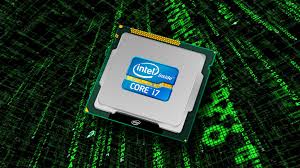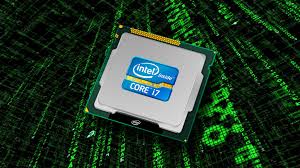
Even as the money from data center chips was up markedly, Intel reported a slightly higher quarterly earnings compared to the same period last year.
Intel reported that compared to the fourth quarter a year earlier, the company reported a net income in the fourth quarter of 2015 that fell by 1 percent to $3.6 billion, or 74 cents a share. The revenue climbed 1 percent, to $14.9 billion said the company.
Expectations of Wall Street analysts were exceeded by the company’s net income. According to a survey of analysts by Thomson Reuters, experts had anticipated 63 cents a share on revenue of $14.8 billion.
For the entire year of 2015, Intel revenue was $55.4 billion, down 1 percent from 2014 and the net income was $11.4 billion which was down 2 percent.
By after-hours trading Thursday evening however the share price of the company was down about 4 percent.
Experts claim that Intel’s influence has changed in recent years.
Just as Microsoft and other makers of PC software count on the demand for new PCs to sell their products, Intel still gets 59 percent of its revenue from chip sales to PC makers like HP Inc. and Dell.
PC business is getting tough as was reported by the market research firm IDC on Tuesday claiming that there was a drop of 10.4 percent in shipment of PCs in 2015 compared to 2014 with a total shipment of 276 million PCs.
“PCs don’t matter as much as they used to. They’re only part of the story that includes mobile devices and cloud computing,” said Jay Chou, an analyst with IDC.
There was a rise of 4 percent for the company data center chip sales, Intel said. The sales were not just to clouds but to older kinds of computing. Data center chips accounted for than 60 percent of the company’s operating profit margin along with Intel’s much smaller businesses in memory and sensor chips for devices.
Using Intel as an indicator of the health of the rest of tech is not as easy as it used to be since the PC industry is sliding. Intel’s investment in Moore’s Law is the number to watch now say analysts.
Moore’s Law is named for an Intel co-founder, Gordon Moore. It states that computing power, figured in the density of transistors on a chip, tends to double every 18 to 24 months. This essentially translates into the fact that a $2 of computing power today will cost $1 in 2018.
It is expensive to keep up with Moore’s Law. Intel spent about $8 billion in 2001 in research and development, along with marketing and sales. The same elements cost around $20.1 billion in 2015, Intel said on Thursday.
The big semiconductor makers GlobalFoundries, Samsung and Taiwan Semiconductor Manufacturing Company each has to invest billions to stay in the game as a percentage of revenue, the number has crept up too, and on both counts it is at a cost few companies could manage.
“Intel can decide if Moore’s Law is 18 or 24 or 36 months long,” said Amit Daryanani, an analyst with RBC Capital Markets.
A critical next step in delivering on Moore’s Law would happen about a year later than expected, Intel had announced last year that scared many technologists.
The chief financial officer of Intel, Stacy Smith, however was not that concerned about Moore’s Law.
“Moore’s Law is the heartbeat of our company. It is the core of our competitive advantage,” he said.
(Source:www.nytimes.com)
Intel reported that compared to the fourth quarter a year earlier, the company reported a net income in the fourth quarter of 2015 that fell by 1 percent to $3.6 billion, or 74 cents a share. The revenue climbed 1 percent, to $14.9 billion said the company.
Expectations of Wall Street analysts were exceeded by the company’s net income. According to a survey of analysts by Thomson Reuters, experts had anticipated 63 cents a share on revenue of $14.8 billion.
For the entire year of 2015, Intel revenue was $55.4 billion, down 1 percent from 2014 and the net income was $11.4 billion which was down 2 percent.
By after-hours trading Thursday evening however the share price of the company was down about 4 percent.
Experts claim that Intel’s influence has changed in recent years.
Just as Microsoft and other makers of PC software count on the demand for new PCs to sell their products, Intel still gets 59 percent of its revenue from chip sales to PC makers like HP Inc. and Dell.
PC business is getting tough as was reported by the market research firm IDC on Tuesday claiming that there was a drop of 10.4 percent in shipment of PCs in 2015 compared to 2014 with a total shipment of 276 million PCs.
“PCs don’t matter as much as they used to. They’re only part of the story that includes mobile devices and cloud computing,” said Jay Chou, an analyst with IDC.
There was a rise of 4 percent for the company data center chip sales, Intel said. The sales were not just to clouds but to older kinds of computing. Data center chips accounted for than 60 percent of the company’s operating profit margin along with Intel’s much smaller businesses in memory and sensor chips for devices.
Using Intel as an indicator of the health of the rest of tech is not as easy as it used to be since the PC industry is sliding. Intel’s investment in Moore’s Law is the number to watch now say analysts.
Moore’s Law is named for an Intel co-founder, Gordon Moore. It states that computing power, figured in the density of transistors on a chip, tends to double every 18 to 24 months. This essentially translates into the fact that a $2 of computing power today will cost $1 in 2018.
It is expensive to keep up with Moore’s Law. Intel spent about $8 billion in 2001 in research and development, along with marketing and sales. The same elements cost around $20.1 billion in 2015, Intel said on Thursday.
The big semiconductor makers GlobalFoundries, Samsung and Taiwan Semiconductor Manufacturing Company each has to invest billions to stay in the game as a percentage of revenue, the number has crept up too, and on both counts it is at a cost few companies could manage.
“Intel can decide if Moore’s Law is 18 or 24 or 36 months long,” said Amit Daryanani, an analyst with RBC Capital Markets.
A critical next step in delivering on Moore’s Law would happen about a year later than expected, Intel had announced last year that scared many technologists.
The chief financial officer of Intel, Stacy Smith, however was not that concerned about Moore’s Law.
“Moore’s Law is the heartbeat of our company. It is the core of our competitive advantage,” he said.
(Source:www.nytimes.com)





